A compass is an essential tool for sea kayaking or expeditions. This article will help you choose the right compass for your paddling adventures.
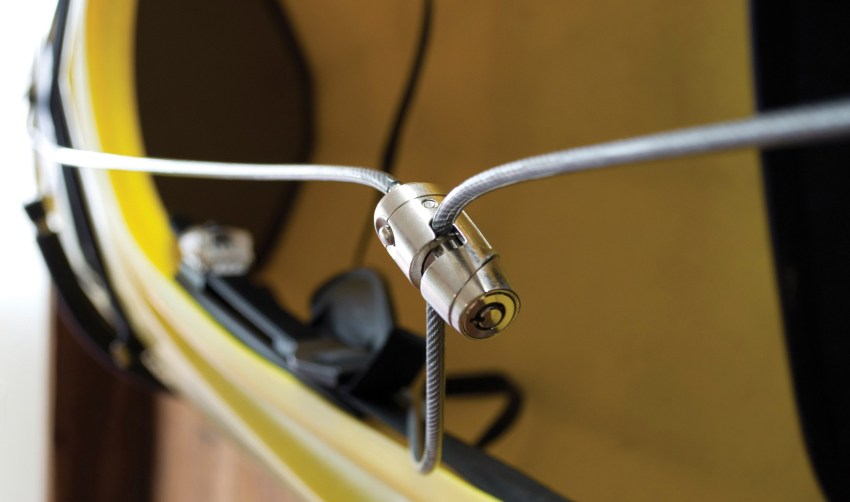
Your kayak is your pride and joy. You’ve worked hard to afford it and you shouldn’t have to worry about someone coming and stealing it. Although thefts of boats seem to be slowly declining in the US, we still need to take precautions.
The best thing that you can do to prevent your kayak from being stolen is to always keep it locked up. There are lots of different styles of locks on the market as well as different ways to lock your kayak.
This article is going to explore how to lock your kayak securely and then look at some of the best kayak locks to help keep your kayak safe.
As an affiliate of Amazon and other retailers, we may earn a small commission when you buy via our links, at no additional cost to you. Thank you!
At a Glance: Best Kayak Locks
- Lasso Kayak Security Lock
- Seattle Sports Cradle Lock
- DocksLocks Coiled Security Cable
- Kanulock Lockable Tie Down Straps
- BV 15FT Security Steel Cable
- Master Lock 8417D Locking Cable
- Thule 538-XT 6FT Lock
- Thule Lockable Strap
Comparison Table: Best Kayak Locks
Top Rated Kayak Locks In 2023
Lasso Kayak Security Lock
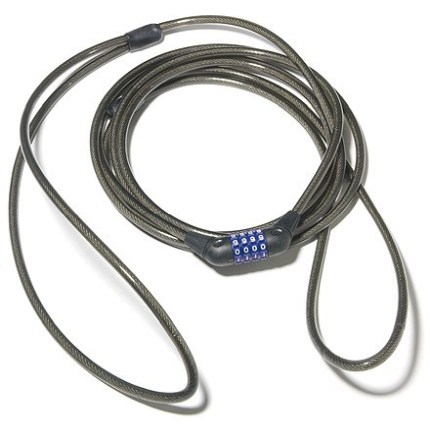
The Lasso Kayak Security Lock is designed to secure recreational and touring style kayaks either to a roof rack or storage rack. The two lasso loops secure over the ends of your kayak without needing to be fed through and security handles or strong points. These then lock in place, under a bar or similar, so that the loops cannot be removed.
The Lasso lock uses 3/8 inch steel with a thick vinyl coating. It has a robust code locking mechanism, so you don’t have to worry about keeping track of a key.
What we like:
- Non-intrusive locking mechanism for touring and recreational kayaks
- Good thickness or cable and robust locking mechanism
- Code lock means you don’t have to keep track of a key
What we don’t like:
- Only suited to specific styles of kayaks
- The cable is known to bounce around in transit and can hit the roof of your car
Seattle Sports Cradle Lock
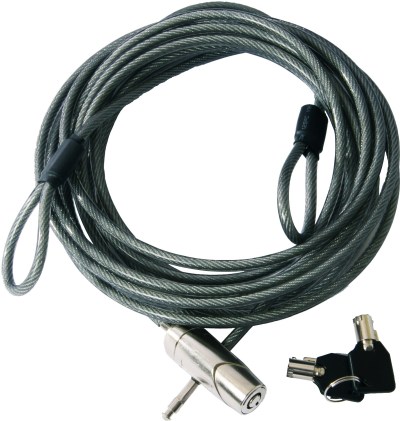
The Seattle Sports Cradle Lock uses a 6 mm galvanized steel cable with a vinyl sheath. It comes in a two-part, 20 ft. cable and can secure kayaks up to 18 ft. long.
This cradle lock secures around either end of your kayak, like a cradle, before locking together in the middle. The locking mechanism can be pulled tight to create a system that doesn’t bounce around. This lock is best used on a roof rack or storage rack.
What we like:
- The whole system can be pulled tight so it doesn’t bounce around on the roof of your car
- Versatile locking system that also works on SUPs
What we don’t like:
- The locking mechanism can be fiddly and hard to pull tight
- The locking mechanism doesn’t cope well with dirt or sand
DocksLocks Anti-Theft Weatherproof Coiled Security Cable
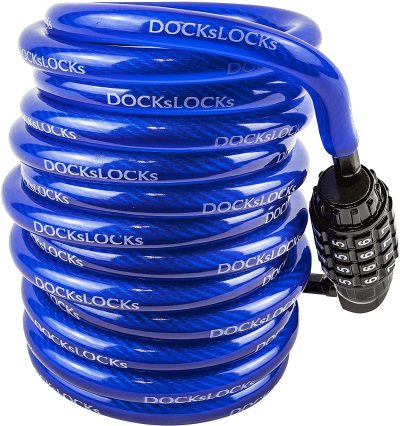
The DockLocks Weatherproof Coiled Security Cable is a versatile lock that looks similar to the bike locks most people are used to. These 10 ft long locks are made from steel cable and are 10 mm in diameter.
With a combination lock, this can be threaded through strong points on kayaks and locked to just about anything. The whole system is designed to be as waterproof as possible.
What we like:
- Compact size for a 10 ft cable
- Can be locked to almost anything
- Affordable
What we don’t like:
- The tight coils make it hard to thread through handles
- Requires a strong point attachment on your kayak
Kanulock Lockable Reinforced Stainless Steel Tie Down Straps

The Kanulock Lockable Reinforced straps have steel strips along the edges of the fabric of the strap itself. This stops your straps from being slashed on your roof, so your kayak is more secure.
The buckles of these straps can only be opened once the key lock has been released. If you need a secure way of transporting your kayak, these straps are about as secure as it gets.
What we like:
- Multiple lengths
- Secure your boat and strap it down in one
- Can be used with any style of kayak
What we don’t like:
- Expensive
- Only useful in transport. These could be used on a storage rack but may corrode quickly
BV 15FT Security Steel Cable
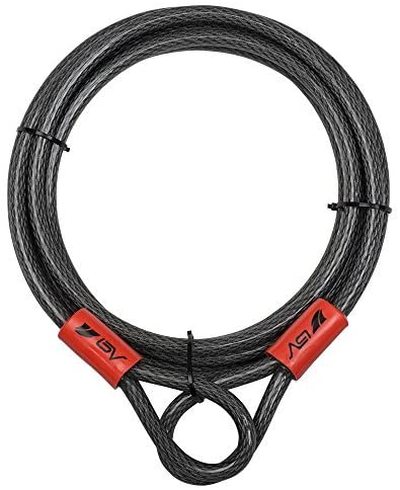
The BV 15 FT security cable uses 10 mm braided steel inside a weatherproof vinyl coating. This is a simplistic style of cable and you will need a padlock or similar to connect the two ends. This 15 ft cable can be threaded through the handles of multiple kayaks and connected to keep them secure.
What we like:
- Simplistic design that can lock multiple kayaks together
- Sturdy cable with a thick vinyl sheath
What we don’t like:
- Requires the purchase of an additional padlock to secure the ends
Master Lock 8417D Python Adjustable Locking Cable
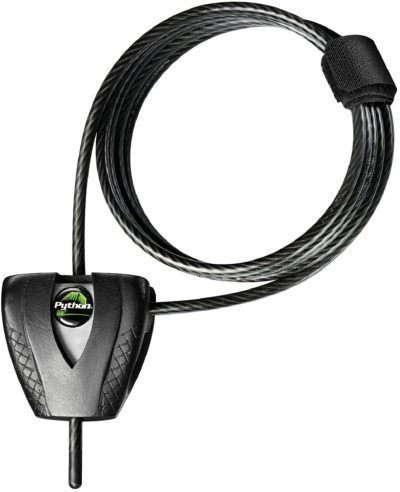
The Master lock 8417D is an adjustable locking cable that can be used at any length up to 6 feet. This means that if you are locking a kayak on the roof of your car, you can pull the cable tight and prevent it from bouncing around.
The Master Lock 8417D uses a strong 5 mm steel cable inside a vinyl sheath. The locking mechanism is held within weatherproof housing, so it won’t corrode easily.
What we like:
- Easy to thread the end of this lock through small gaps
- A weatherproof and sturdy locking mechanism
- Can be pulled tight to prevent bouncing
What we don’t like:
- This is a short lock that might struggle with multiple kayaks
Thule 538-XT 6FT Lock
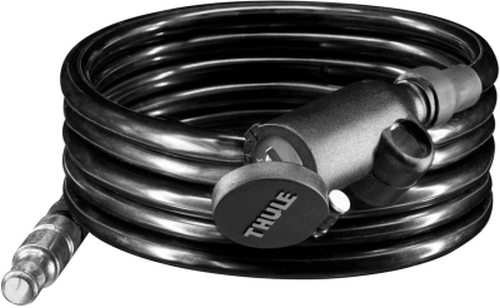
The Thule 538-XT is a straightforward padlock that uses a braided steel cable, wrapped in vinyl, with a single key barrel at the end. This cable is 6 feet long and coils up to fit in most storage hatches or pockets. The narrow end of this design is easy to pass through handles or strong points on your kayak.
What we like:
- Strong and weatherproof lock
- Straightforward padlock design
What we don’t like:
- Short in length and may not suit multiple kayaks
- Coiled cables can be difficult to thread through handles
Thule Lockable Strap
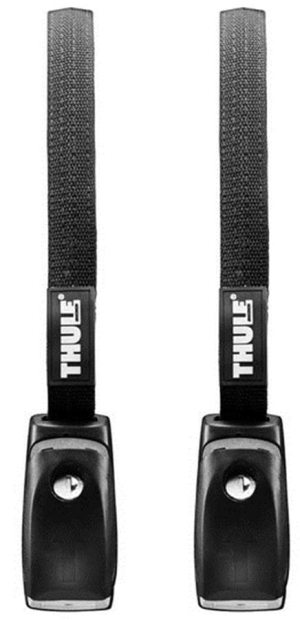
These Thule Lockable Straps have steel cable threaded into the nylon straps to give you a fully maneuverable strap that is strong enough to not be cut through. The locking mechanisms on the buckles mean that you cannot release the straps unless you have the key.
Lockable straps are an excellent way to keep your kayak secure on the roof of your car.
What we like:
- No extra steps for locking your kayak to the roof of your car
- Can be used with any style of kayak
- Multiple lengths available
What we don’t like:
- Only useful while in transit
How to Choose a Kayak Lock: Things to Consider
Most would-be thieves will be put off simply by the fact that you’ve locked your kayak. Opportunists are usually looking for an easy steal. Any hurdles you put in the way are often enough to keep your kayak safe.
Security Cable: Optimal Thickness and Length
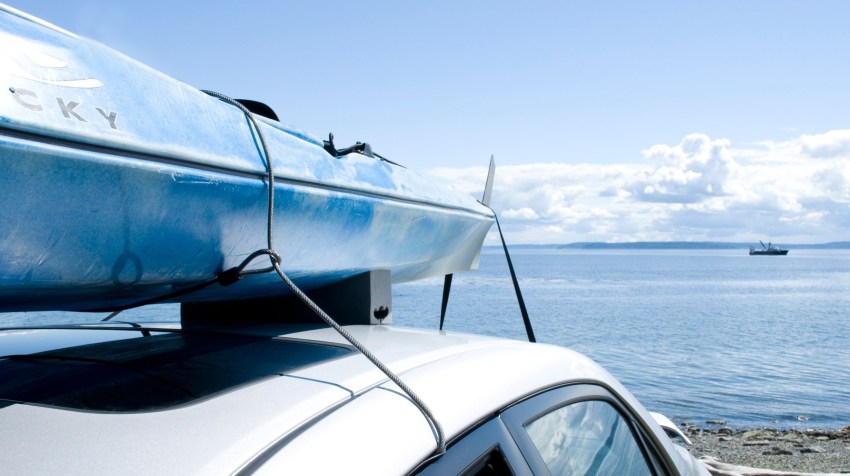
The core of most kayak locks is steel cable, often coated with a layer of vinyl or a braid around it. You’ll find that kayak lock cables come in various thicknesses and lengths.
Which one do you choose? Is it always best to buy the thickest and longest cable?
The truth is, any cable can be snapped with a decent bolt cutter, and it does not matter if it’s ¼ inch or ½ inch.
I’d say don’t just go for the thickest cable. ¼ or 3/8 of an inch should be enough in most cases. Thinner cable is easier to fit through tight handles or scupper holes and to manipulate. It is also lighter and takes up less space.
Getting the longest cable is not always a good idea, either. If you plan to lock your kayak to a roof rack or a kayak trailer, the excess cable could flop around and cause a lot of trouble.
To avoid that, try securing your kayak to your vehicle with a rope the way you would with a cable lock. You’ll quickly find out how long your cable should really be.
RELATED: How to Transport a Kayak Without a Roof Rack?
Locking Mechanism: Key vs. Combination Lock
The two most popular types of locks are traditional key padlocks and combination locks
Key locks are faster to unlock and can be more reliable, but if you forget or lose a key, you have a problem.
Code locks rely on a numeric code, so there’s no key to lose.
Just make sure you select a code that is easy for you to remember but difficult for a thief to guess. 1111 or 9999 are not the best codes.
Some kayak locks are adjustable. You can pull cord through a slot in the locking mechanism before securing it. This allows you to pull the cable tight and prevent it bouncing in transit.
Cable Lock vs. Security Chain
If you’re serious about the security of your kayak and don’t mind the extra weight or expense, a security chain will often offer better protection than a cable lock. Grade 80, 90, or 100 hardened steel chains are extremely difficult to cut with bolt cutters. You can still cut almost any chain with an angle grinder, but it’s slow and loud and you need to plug it in somewhere. Pewag chains are considered some of the best on the market.
How to Lock Up a Kayak – Sit-on-top vs. Sit-in
Locking up your kayak isn’t quite as easy as locking up a bike. There are things you may need to think about depending on your kayak style.
Locking a Sit-on-top Kayak
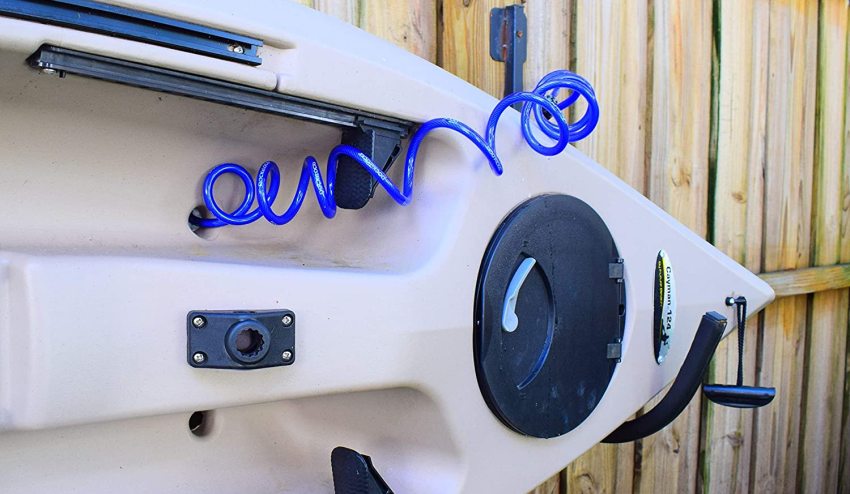
Sit-on-top kayaks are usually straightforward enough to lock up. If your kayak has molded handles, or strong points bolted to it (as many fishing kayaks do), then you can simply loop the cable through these and lock it securely.
Another popular way to lock a sit-on-top kayak is to run the security cable through a scupper hole and then secure it to a stationary object.
Remember to remove any gear or parts of your kayak that can be easily stolen. A would-be thief may be put off by a lock but could be tempted by your seat or storage systems instead.
Locking a Sit-in Kayak
It can be more difficult to find a security point on a sit-in kayak to run a cable lock through. Unless your kayak has a strong point, which is usually a piece of metal bolted directly to the top deck, you might struggle for an attachment point.
If your sit-inside kayak does not have a secure attachment point for a cable, you can use a lasso-style cable lock instead. The security cable loops around either end of your kayak and locks in the middle, so that the lasso ends aren’t removable from the kayak.
Some people recommend bolting an attachment point to your hull. Unless you are sure what you’re doing, drilling holes in your kayak can have devastating effects. Any modifications may also void your kayak’s warranty.
How to Keep Your Kayak Safe at Home
Most of the time, we lock our kayaks up at home. If you store your kayak outside, you should take steps to protect it from theft.
Find an Anchor Point
The first step to keeping your kayak secure is to store it properly. Usually, this means creating some style of storage rack. The storage rack serves as a stationary object to lock your kayak up to, so make sure it is bolted into a wall.
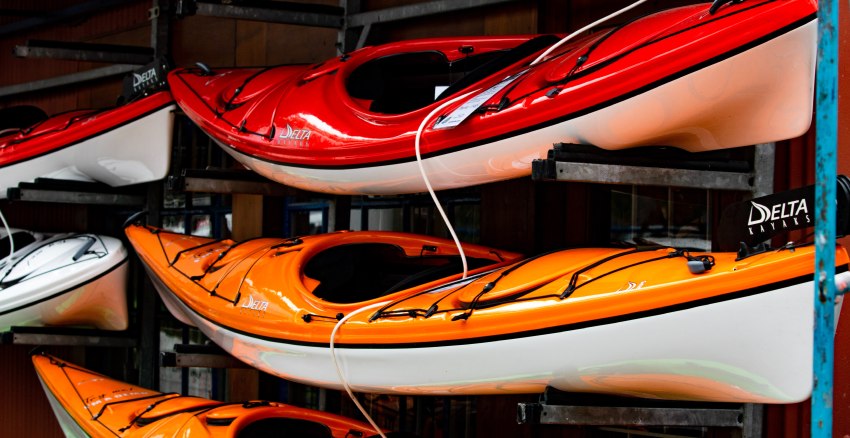
If you don’t have a rack, you will need an alternative secure anchor spot to lock the kayak to.
Keep The Kayak Out of Sight
We mentioned earlier that any type of kayak lock will keep many would-be thieves away. However, just because your kayak is locked doesn’t mean that it is never going to be targeted.
It is always a good idea to store your kayaks out of sight and covered. This way you’ll protect them from both harsh weather and prying eyes.
RELATED: Hang Your Kayak! Best Kayak Hoist Systems for 2023 Reviewed
Locking Your Kayak for Transportation
How to Lock a Kayak to a Roof Rack
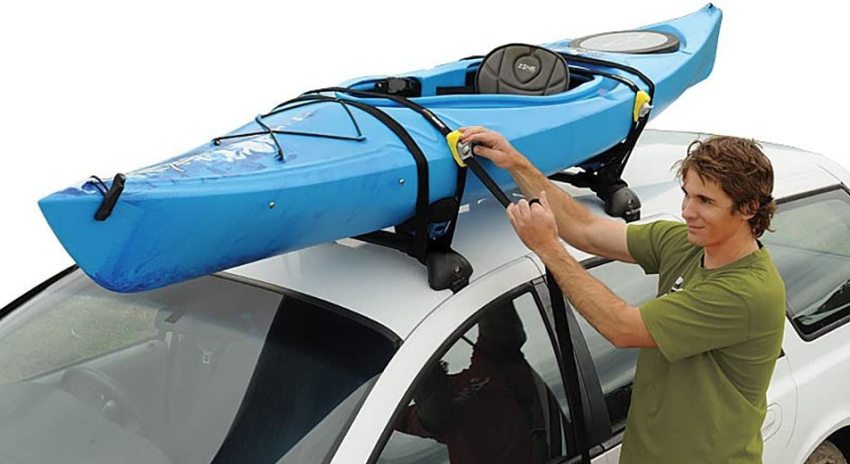
Although uncommon, it’s not unheard of for a kayak to go missing from a roof rack.
To make sure that does not happen to you, start by making sure your roof rack itself is secure and can’t be stolen. Locking roof racks, or those that are harder to remove, are less appealing to opportunists.
Once your kayak is on your roof, you have a few choices for how to lock it. You can use a simple lock, or a lasso style lock, which loops around the ends of your kayak. These need to be pulled tight enough that you won’t have a cable bouncing off the roof of your car for your whole journey.
Alternatively, you can use locking roof rack straps. These are used in place of traditional cam-straps, but are woven with steel cable through them. The buckles are locked in place and can only be released with the key.
How to Lock a Kayak in a Truck Bed
Truck beds usually have attachment points on the bed itself, as well as up the sides and behind the cab. Usually, if you are transporting kayaks in your truck bed, you will secure it to these strong points.
To lock a kayak in your truck bed, you can use the same methods as you would on a roof rack. A cable style lock is easier to use on a truck than a lasso or locking straps. The cable is easier to fit though attachment points and can go through multiple kayaks, if you have more than one in your truck.
How to Lock a Kayak to a Trailer
If you transport your kayak on a trailer, you can use locking straps or a cable lock to secure your kayak to the trailer frame. For sit-on-top fishing kayaks, it may be a good idea to run a cable through a scupper hole or a molded carrying handle.
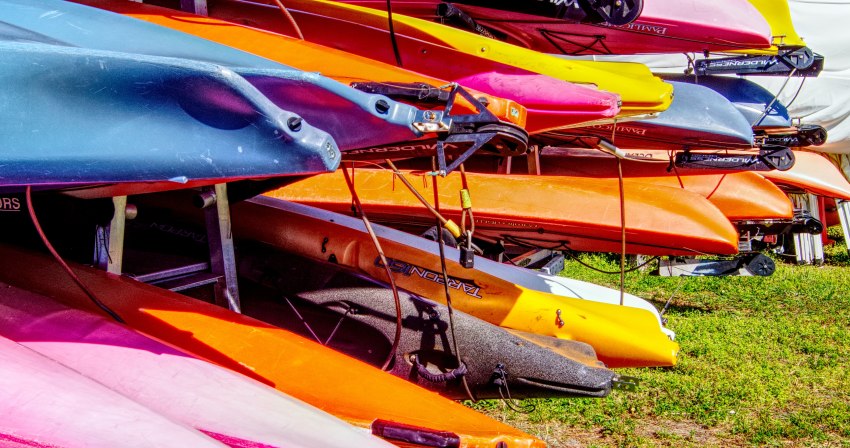
If you have multiple kayaks, the cost of using either of these systems will quickly mount up. To save you from buying multiple locks, a long cable of around 15 – 20 feet will loop through multiple kayaks. The cable can be secured with a padlock.
Locking Your Kayak on the Waterside
If you’re planning a multi day kayaking trip where you will spend a night at public campgrounds, think about taking a kayak lock with you on the water. Many kayak trails have lock points for kayaks and canoes, but a sturdy tree will do the trick.

If you camp a reasonable distance from your kayak, or you are in a busy location, having your kayak locked will give you more peace of mind overnight. The other benefit to locking your kayak is that it won’t get swept away by wind or rising river levels in the night.

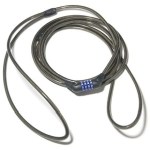
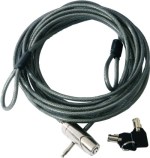
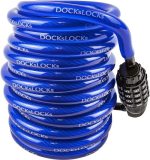
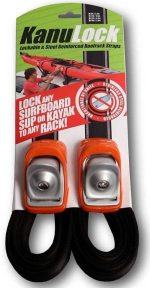
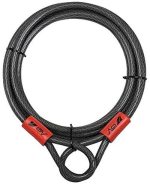
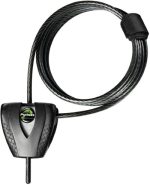

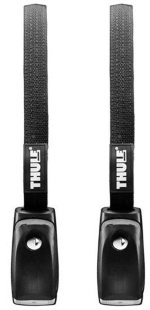
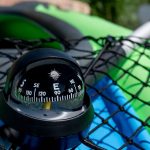





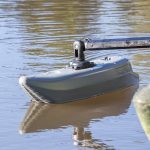


The majority of seasoned kayakers advise using the Kryptonite Fahgettaboudit Chain, which has a superior-reinforced double deadbolt lock and 14-mm-thick 3T manganese steel chain links, when locking your kayak on the roof rack instead of tie-down straps. Tamperproof chains and cable locks are also options for kayaks.